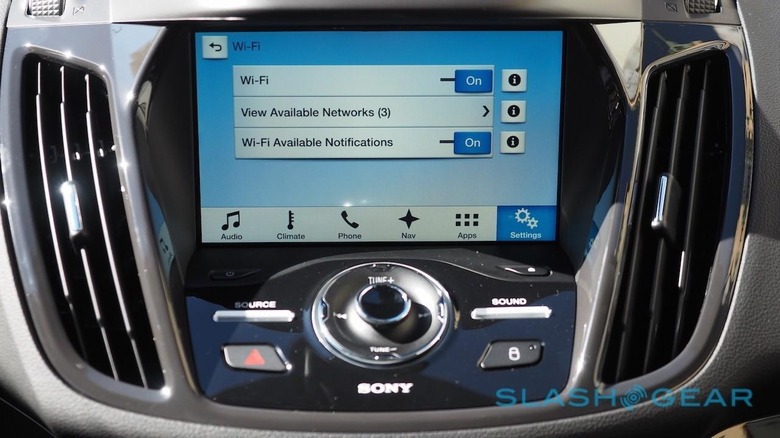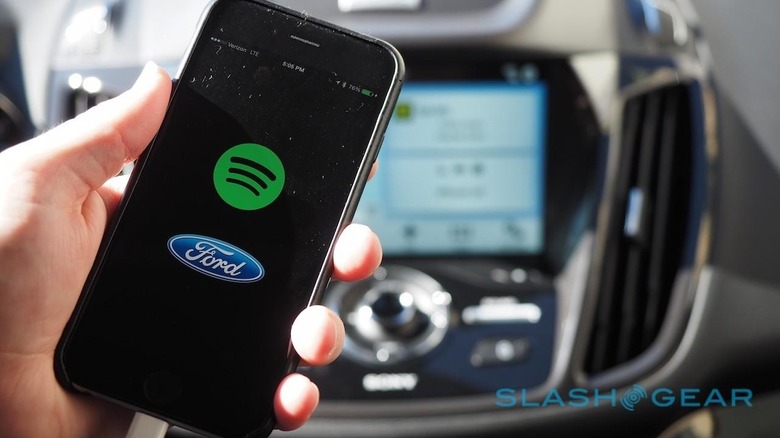Ford Is Updating 2016 SYNC 3 Cars With CarPlay And Android Auto
Ford is rolling out Apple CarPlay and Android Auto to its earlier SYNC 3 cars, with a hotly-anticipated update for its model year 2016 vehicles. SYNC 3 version 2.2 will be available both via a dealer-installed update and via a DIY method, with owners able to load the new software onto a USB stick themselves. However, for the first time, Ford will also offer an over-the-air update as a third option, part of its shift to bring some smartphone-style thinking to its infotainment platforms.
It takes advantage of a feature the automaker added in SYNC 3, utilizing the system's integrated WiFi connection. As long as the car is on a WiFi network – such as when it's parked in the garage, hooked up to the home's internet connection – it'll be able to download the new software in the background. The car needn't be left running, either: as long as the WiFi is connected prior to shutting the engine off, it'll continue the process.
Not all of the model year 2016 cars have WiFi, of course, and so for those – and owners who don't want to rely on wireless methods, or perhaps have a slow internet connection – there's a direct install option too. The v2.2 software will be available to download from owner.ford.com today. Once saved to a USB drive, and plugged into the car's USB hub, it'll automatically update.
Finally, those who don't want to go through the process themselves will be able to take their Ford into the nearest dealer and have it done there, instead. It's worth noting that there might well be a charge for that, however.

With approximately 800,000 vehicles running SYNC 3 from 2016 in the wild, it's a significant update. Ford made Android Auto and Apple CarPlay standard on all of its model year 2017 cars, from the smallest Fiesta, through sports cars like the Mustang and GT, to SUVs like the Escape and Explorer, and trucks in the F-Series. In addition to the new smartphone integration, the updated version for 2016 cars will add a manual update check option over WiFi, rather than owners having to rely on the car checking periodically itself.
There's one minor hitch in the whole process, however. While those with an Android phone will be able to update the SYNC 3 software and get going with Android Auto straight away, the 2016 Fords will need a USB hub upgrade in order to play nicely with CarPlay on the iPhone. That'll need to be handled by a dealer.
Although automakers like Tesla have made dashboard updates more commonplace, it's still fairly unusual in the auto industry as a whole to see older cars get major updates of this sort. While patches and security fixes are fairly common, traditionally car companies have preferred to sell you a whole new vehicle. Ford is looking to buck that trend.
Indeed, connected vehicle program chief Don Butler explained to me, the goal is to eventually push out updates to the automaker's cars on a monthly basis. Before that can happen, Ford plans to reduce its use of tier 1 infotainment systems – that is, externally designed and manufactured radio and navigation hardware that the company slots into its dashboards – and "roll our own," Butler says. That should be faster, since it can all be done internally rather than outsourced, but also less expensive, since Ford will be able to reuse technologies like the Bluetooth stack which currently it's paying for with each system iteration.

At the heart of the project is the former BlackBerry team Ford acquired, a roughly 400 strong group based predominantly in Ottawa, Canada. They're being positioned at the center of Ford's software overall; initially, they'll be working on QNX-based infotainment systems, but eventually Ford hopes to expand the OS to other modules in the car. They'll also be challenging some of the status-quo thought processes in the auto industry with smartphone and software development-style alternatives.
For instance, Butler explained, Ford is looking to make better use of computer modeling in the prototyping process. Currently, the company's engineers make hundreds of physical prototypes, which is time-consuming, expensive, and fairly wasteful in the long run. Butler estimates that more aggressive use of computer modeling could cut that number by around 70-percent.
There's also a push for more runway in component selection. Currently, he explains, "you proved you were a good engineer" by finding the most inexpensive, minimally-required components to suit the task; that keeps the bill of materials down, but in the case of infotainment comes at the cost of future upgrade potential. Ford is now pushing to be more aware of what its developers might want to coax from the hardware years down the line, and spec vehicles accordingly.
